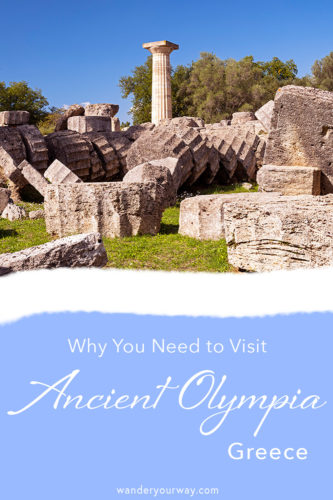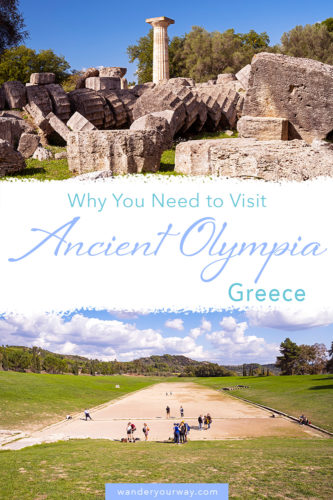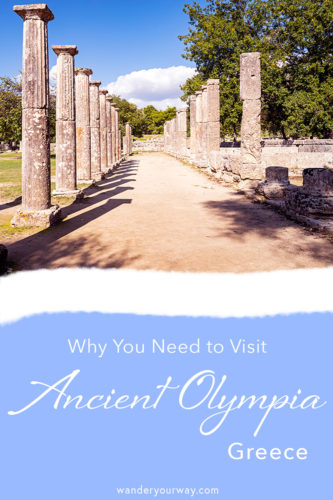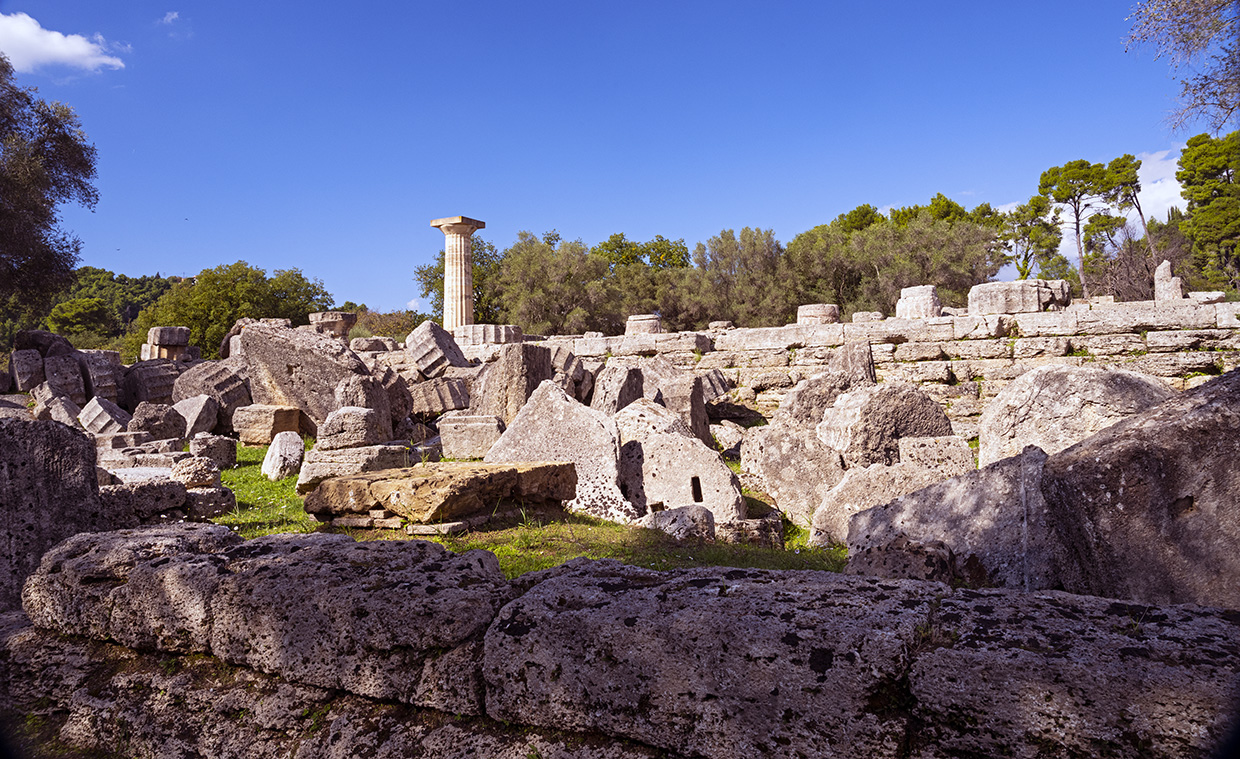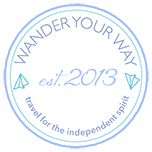Why You Need to Explore the Amazing Ancient Site of Olympia Greece
The Ancient Site of Olympia Greece is one of the best, most amazing sites I’ve ever visited.
Truly.
However, I do have some tips to help you get the most from this ancient site.
These tips will make your visit that much better and more meaningful.
But let’s start first with where Olympia is then dive into what there is to explore.
And at the end, I’ll offer up some tips to make the most of your visit.
Let’s get started.
Where is the Ancient Site of Olympia Greece
The Ancient site of Olympia Greece is on the Peloponnese Peninsula.
It actually is located in the northwestern part of the peninsula out in the rural landscape so it’s not near any major city or large town.
And it sits at the confluence of 2 rivers — the Alfeiós River and the Kladeos.
So Olympia does sit in a valley but it is surrounded by hills and mountains.
Greece is a very mountainous country!
Why and how the Olympic games began
Back in ancient times there was no Greece.
There were many city states such as Athens, Sparta, Corinth.
And they were always — I mean always(!) — fighting with each other.
But, guess what?!
Other people outside of Greece, such as the Persians (present day Iran) and the Romans, saw this infighting as an advantage.
These outsiders could come in and conquer these people who couldn’t get their shit together and get along.
So some of the intelligent and thoughtful folks of the Greek city states decided to start a friendly competition.
They thought if each city state could have their best athletes compete against each other there could be multiple benefits.
Things like getting some of the aggression out and see that maybe they aren’t so different after all.
And if these city state people were getting along then the outsiders might think twice about invading.
So the idea of the Olympic games was born.
The best athletes came to Olympia, lived and trained together for a few weeks prior to the actual competition then the best of the best competed.
And for a time after the games were over, there was no fighting amongst the city states.
Of course, the peace only lasted a few months.
But hey, it was better than nothing.
The Olympic Games were also begun as a way to honor the gods — especially Zeus, the head god.
We’ll come to this later as we see all the different parts of the Ancient Site of Olympia.
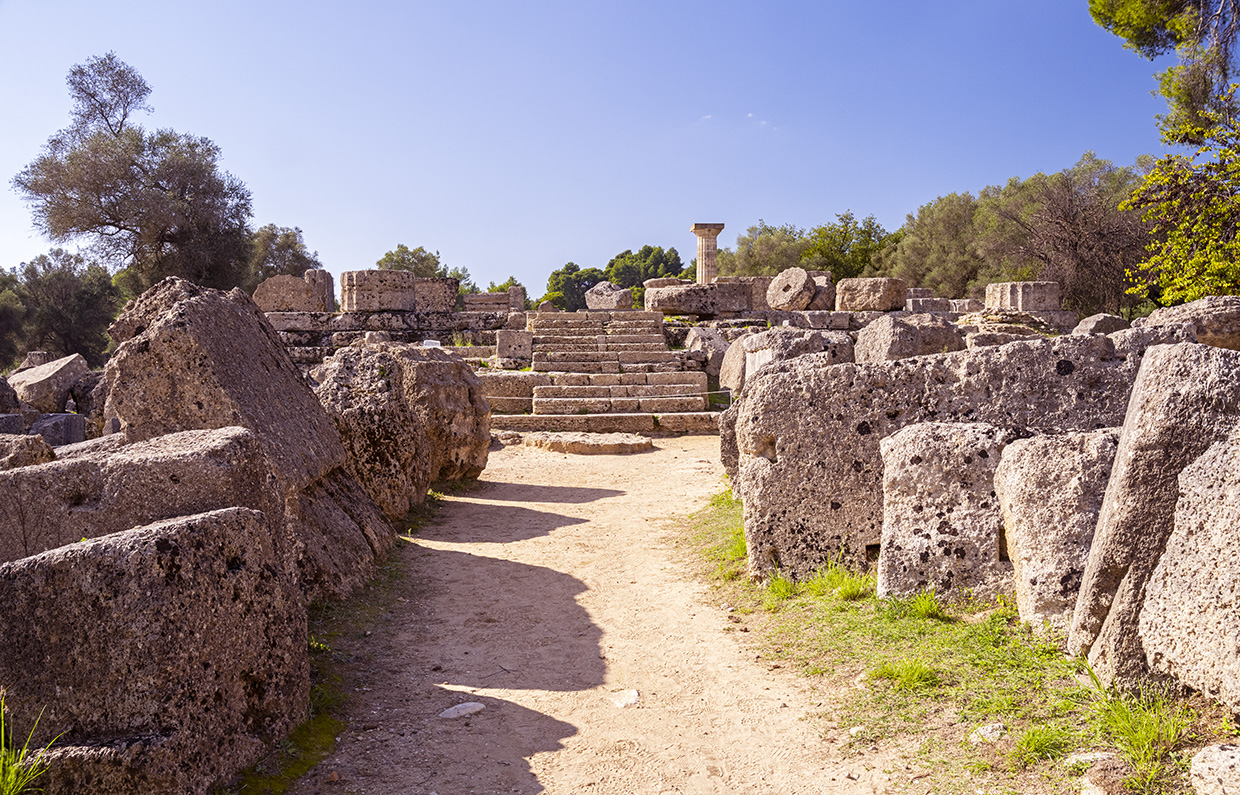
The layout of the Ancient Site of Olympia
The Ancient Site of Olympia is about 70 acres so it’s a decent size.
And it’s broken down into the non-sacred part and the sacred part.
The non-sacred part is where the athletes lived and trained.
And it is where the spectators would stay and where later, the Roman baths were located.
So the non-sacred part of Olympia was kind of like the present-day Olympic Village.
The sacred part of the site is where you will find the temples — one to Zeus and one to Hera (we’ll come to these more in detail later), a sort of vendor or sponsor area, the Hall of Fame, the Wall of Shame and the competition area.
Let’s go over some of these areas of the Ancient Site of Olympia.
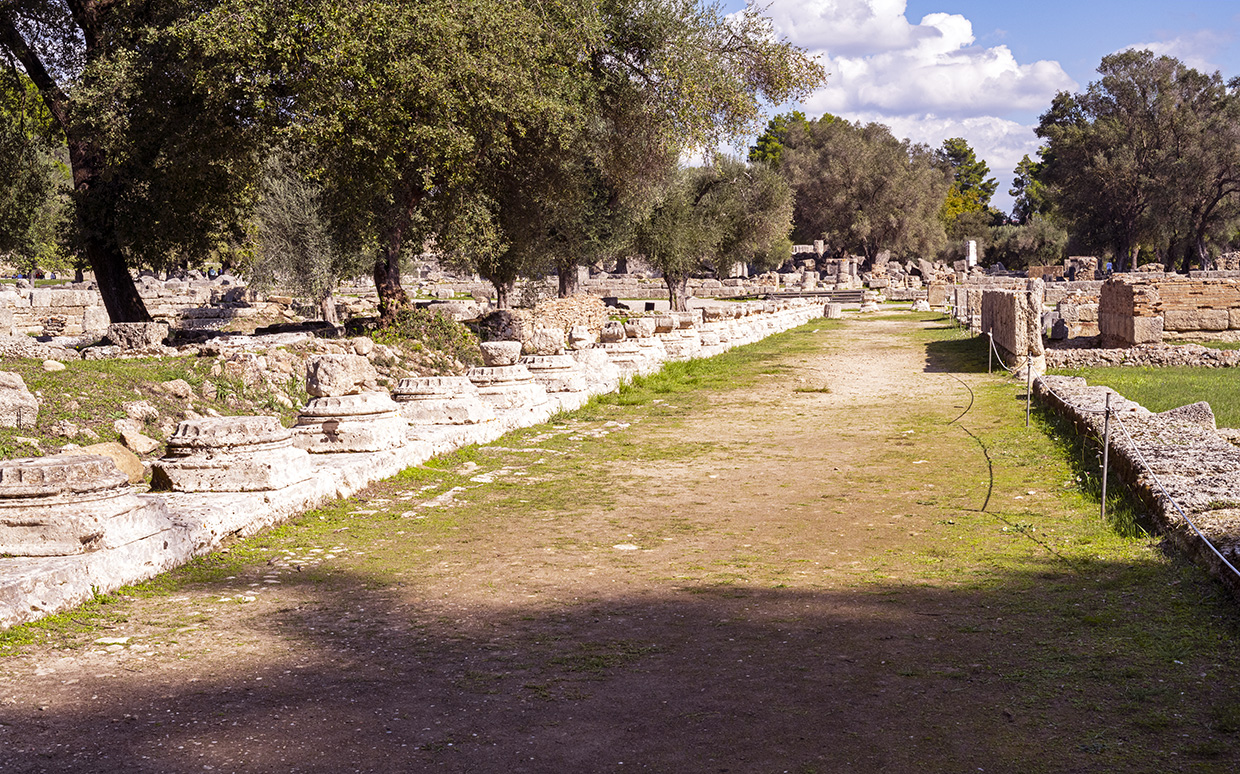
Where the athletes lived and trained
You can think of this piece of Olympia as the Olympic village.
The difference here is that the athletes would live and train together for about a month before the 5 day games were held.
So this is when these men (because there were no women competing or even there as spectators) trained, lived, ate, slept and got to know each other.
And hopefully began to see each other in that human to human way rather than as an Athenian or a Spartan or as “an enemy”.
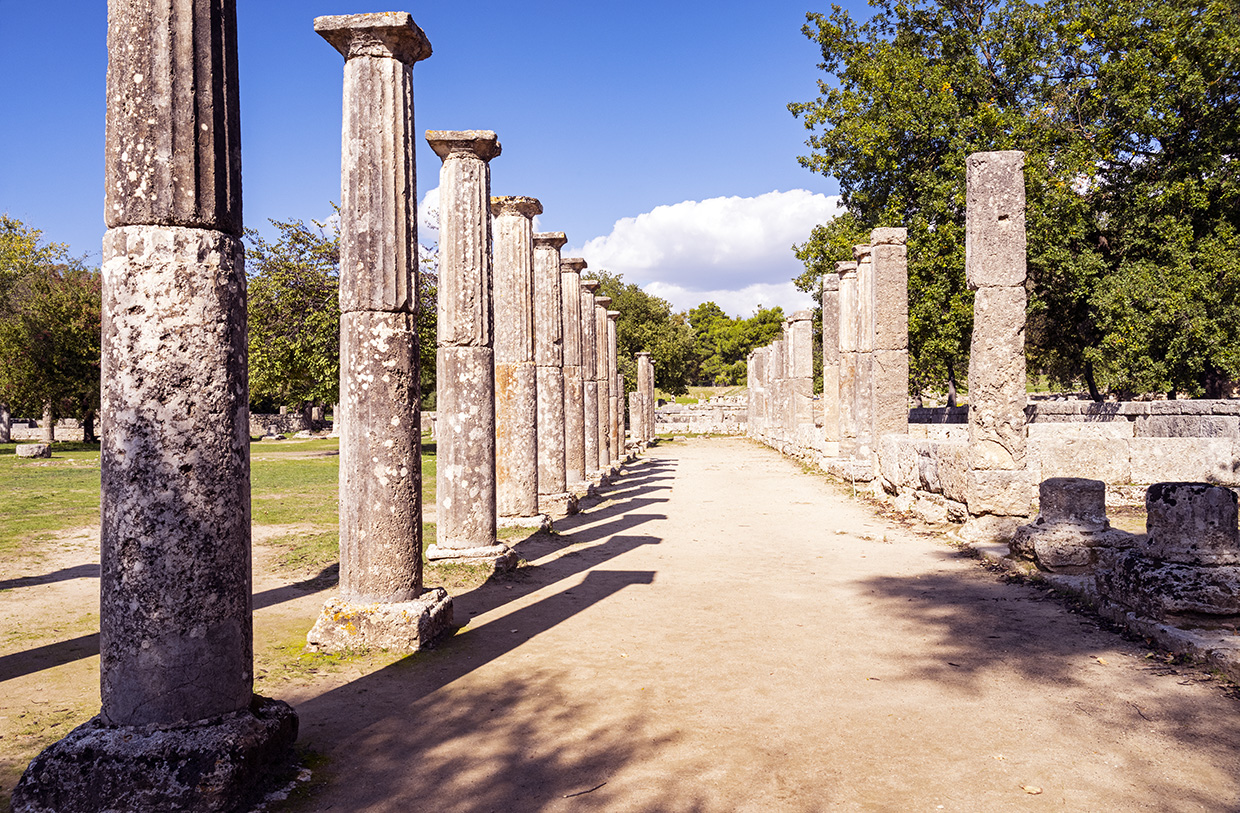
The addition of the “5 star hotel”
So as we came closer to Roman times, a huge “hotel” was built for the VIPs who attended the games.
This was a huge, elaborate building with pools and fountains.
Nearby Roman baths were also built.
It’s cool to imagine what this would have looked like.
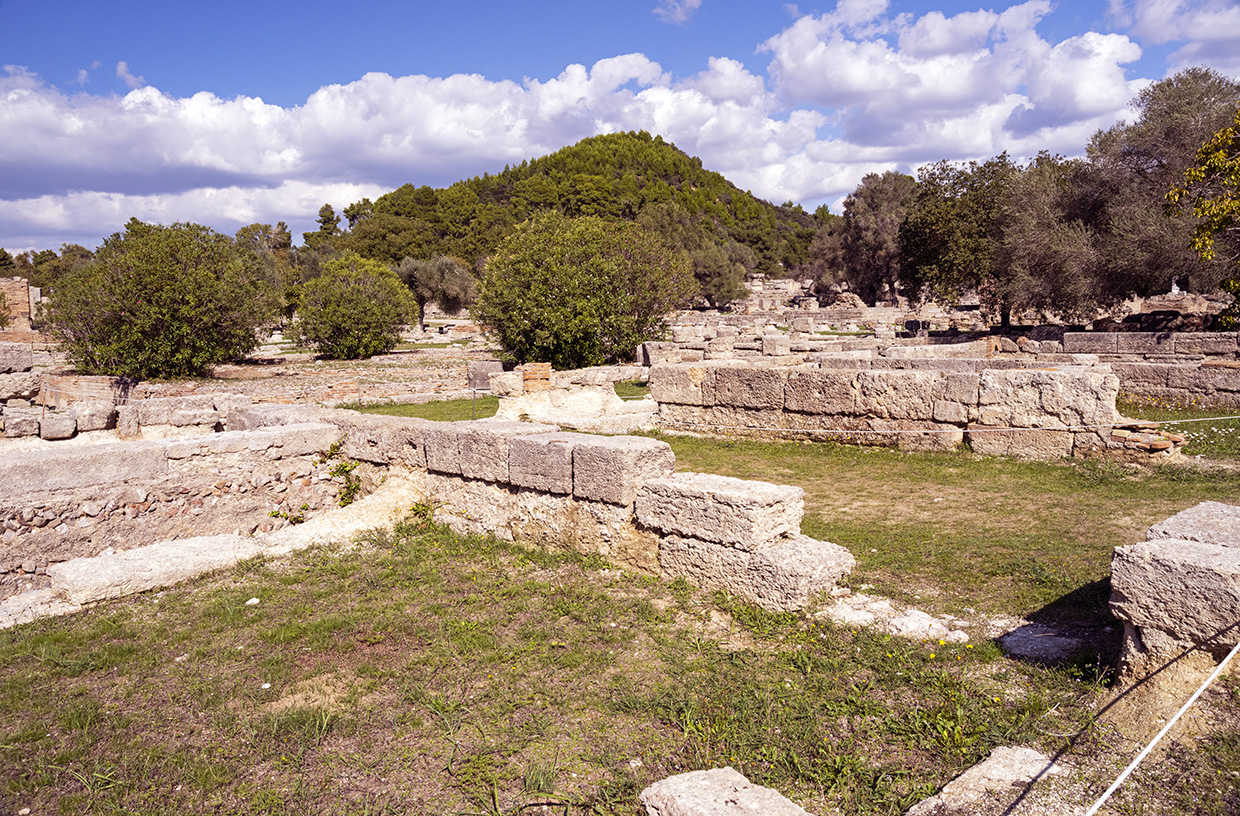
Temple of Zeus
This temple would have been quite large back in the day.
While it is just ruins now — with loads of huge stones lying about — it’s cool to imagine what it would have looked like.
Zeus was the head god so he was the one you wanted to keep happy.
So just outside the temple was an altar where sacrifices were made to Zeus.
Everyone brought something as an offering.
It is said that 100 bulls were sacrificed at times.
That’s a lot of bulls and a lot of ash.
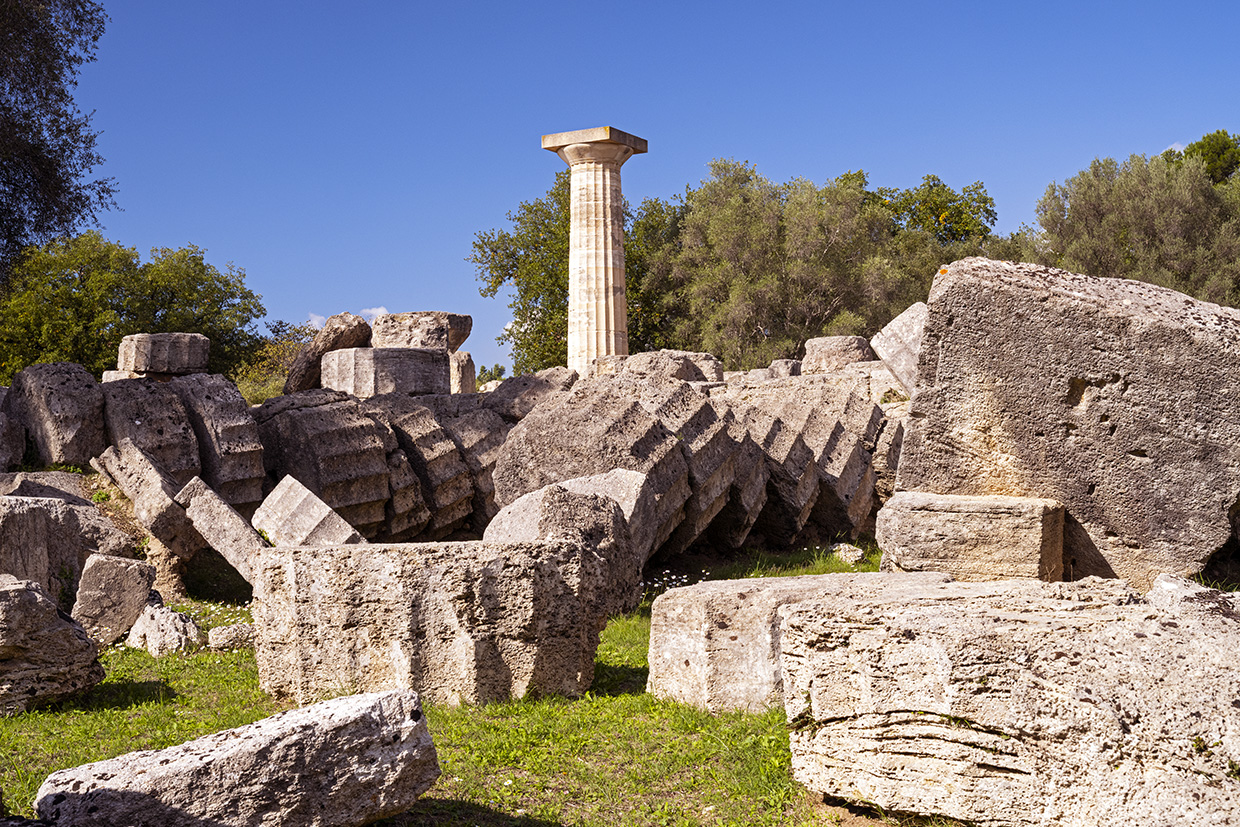
The Temple of Hera and the Olympic flame
Women were not allowed to compete nor were they allowed (rightfully so) to come and watch the games.
It simply would not have been safe with all those men and all that testosterone.
However, the Temple of Hera was actually the first temple built at the Ancient Site of Olympia.
Hera was Zeus’ wife and is the goddess of marriage.
The Greeks did honor women even if they weren’t quite there with some of our modern day beliefs.
They did believe women were at the core of the family.
The women were honored because they had the children and raised them to be good sons and daughters.
Women kept the home in order.
They were essential members of society even if they weren’t really out in “society”.
So the Temple of Hera was very important to Olympia.
The other piece of this temple is that just outside of it is where the Olympic flame burns.
It burns all the time until it is time for it to make the journey to where the next Olympic Games are held.
So when I visited at the very end of October 2021, it had just left for its journey to Beijing, China and the 2022 Winter Olympic Games.
There is always a bit of ceremony around this.
But the flame is an integral part of our modern day Olympic Games.
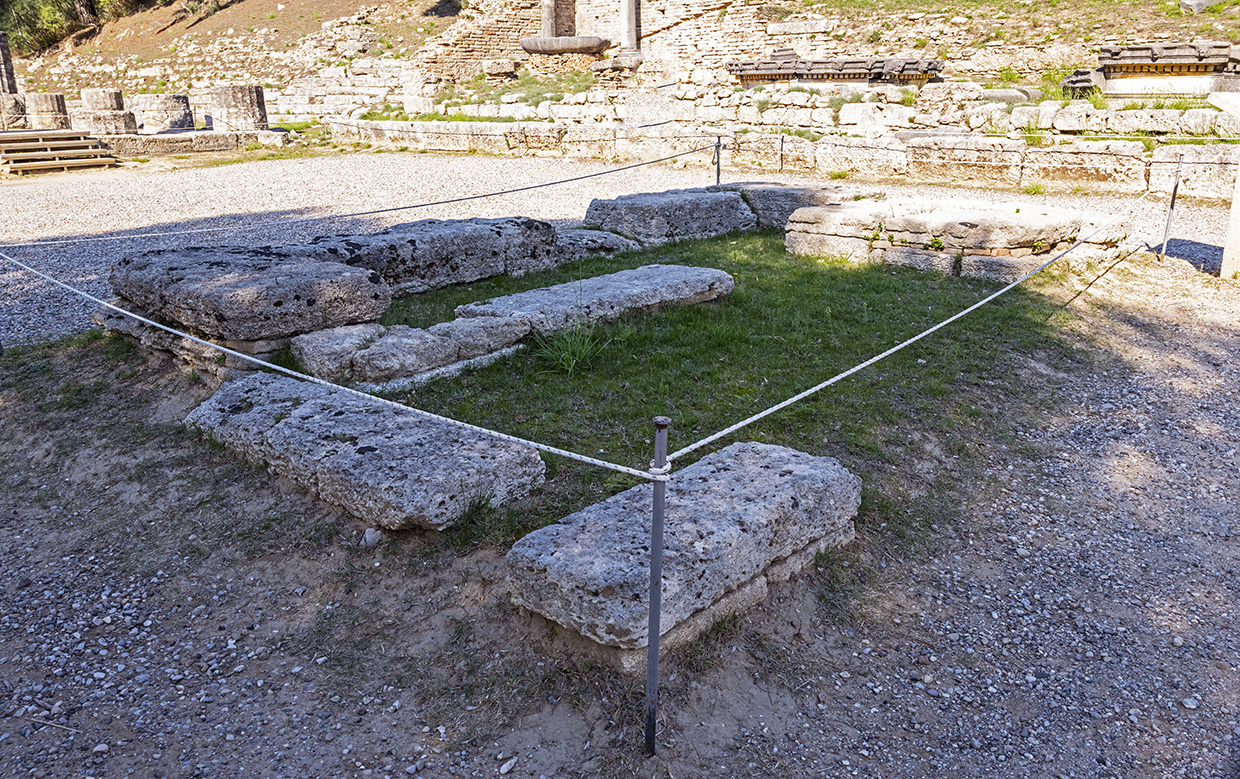
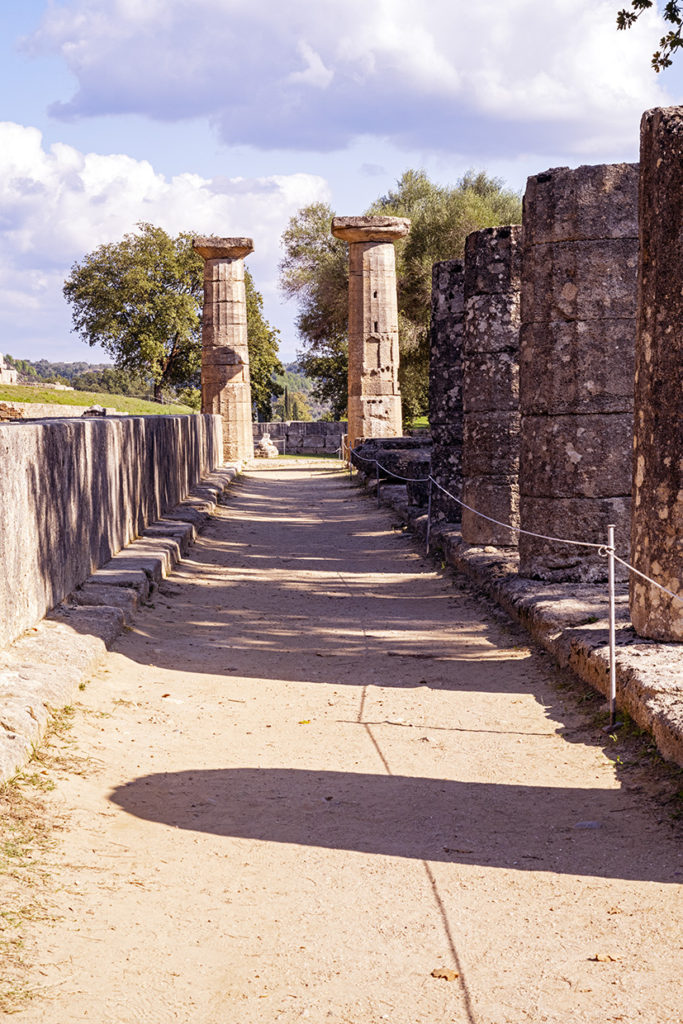
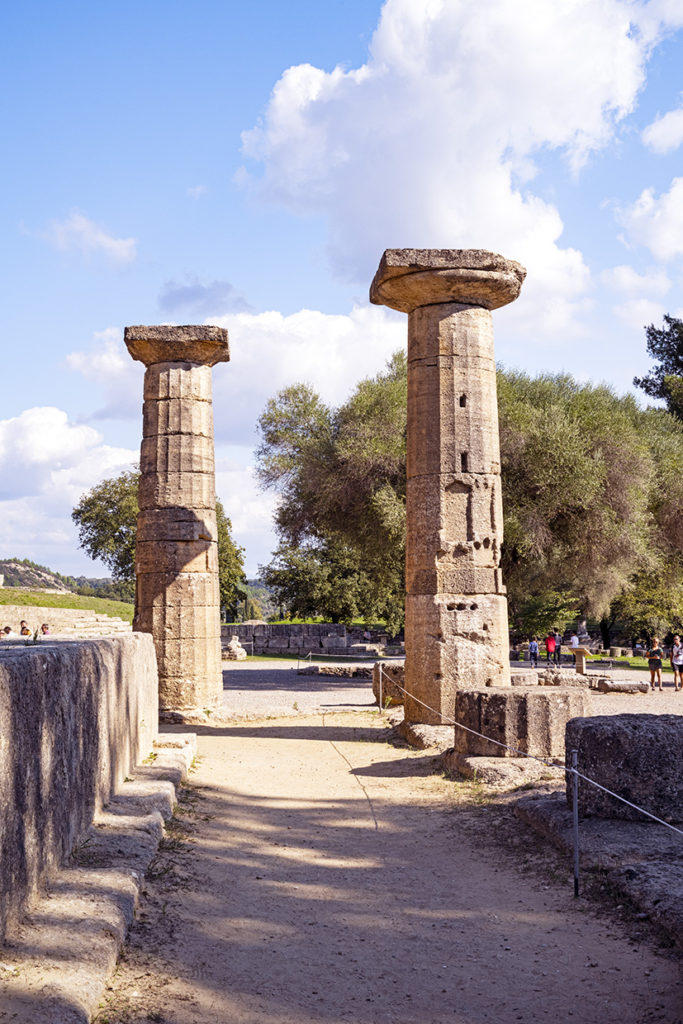
Widget not in any sidebars
The stadium
The stadium of the Ancient Site of Olympia is where the actual competitions took place.
The athletes would enter under an archway and come out onto the field.
This stadium is not like the Roman Colosseum.
There are no seats.
Only the judges and a few VIPs would have seats.
Most of the 40,000+ spectators would sit in the grass.
So this part of Olympia may seem a bit underwhelming.
But to imagine it filled with people is what makes it special.
Plus, you can do a little run on this field and have some of your fellow visitors cheer you.
Really.
This happened to me!
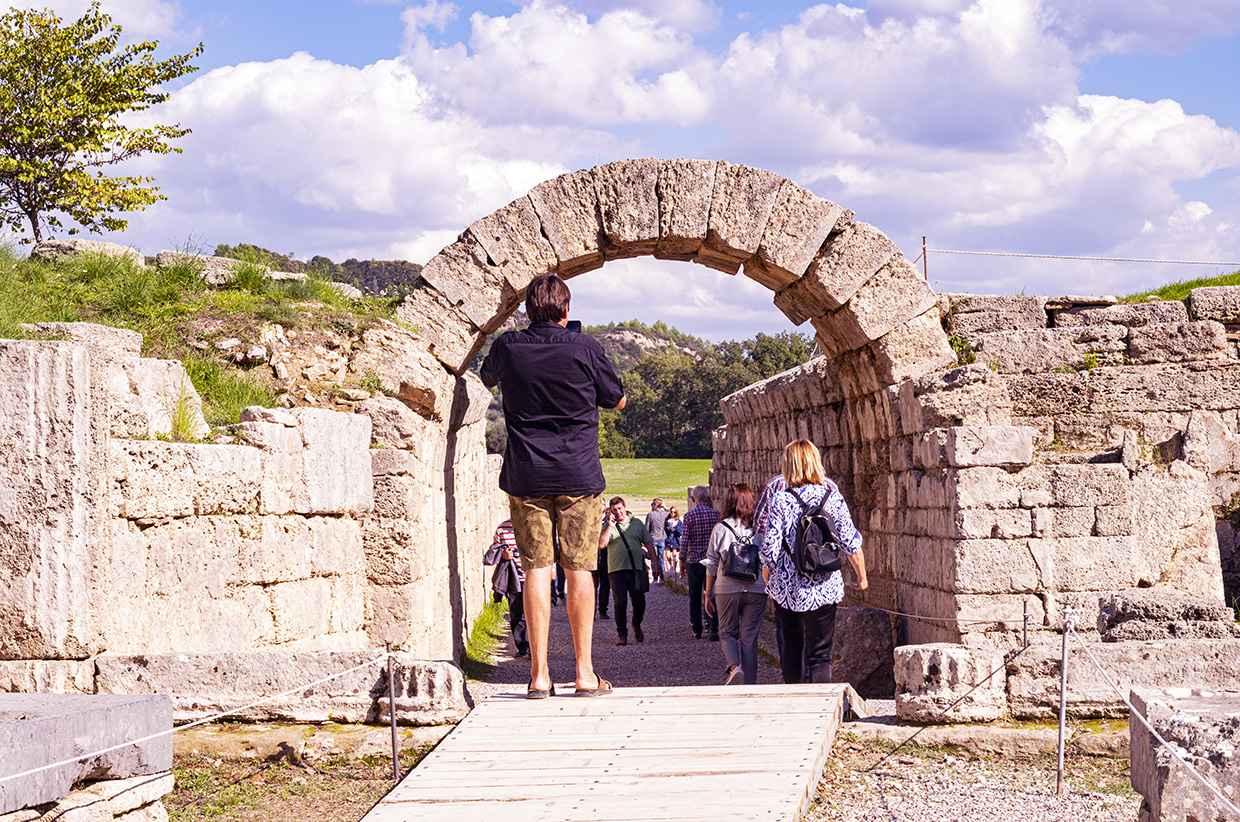
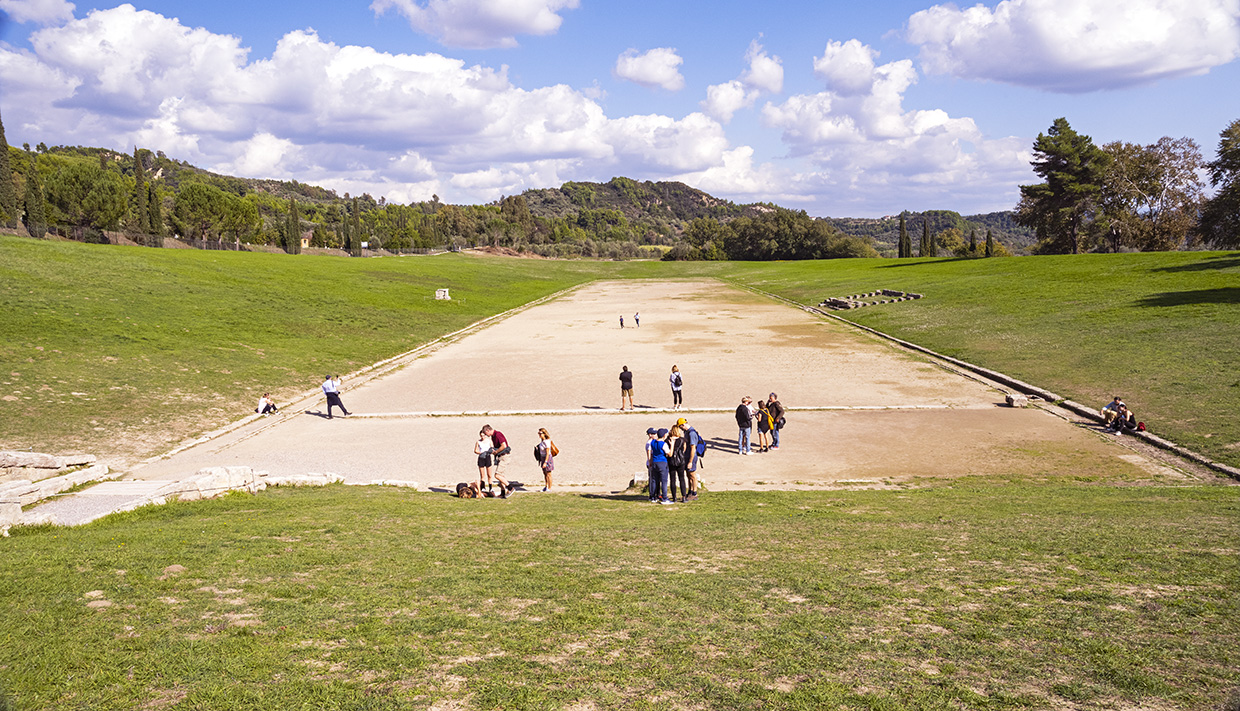
The vendor area
This part of the sacred area is where you would have found what we might think of as the “sponsors” of the Olympic Games.
They would have storefronts along a pedestrian street for everyone to see.
And to buy whatever they were selling.
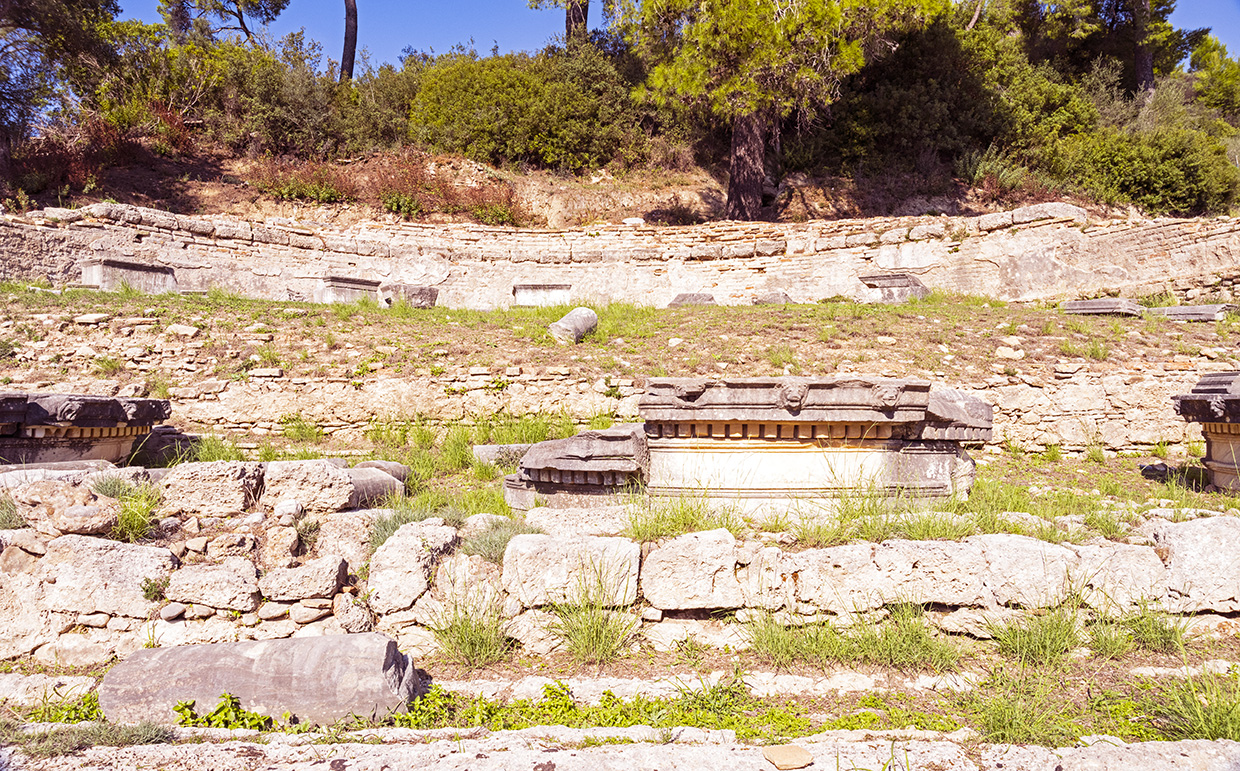
The victors
Each person who won had a statue made of them with their name etched into the pedestal.
There was no monetary award nor was there a medal.
But as a winner you did get a statue.
And that statue was lined up across from the markets (above) so everyone would see your likeness and see that you were a winner.
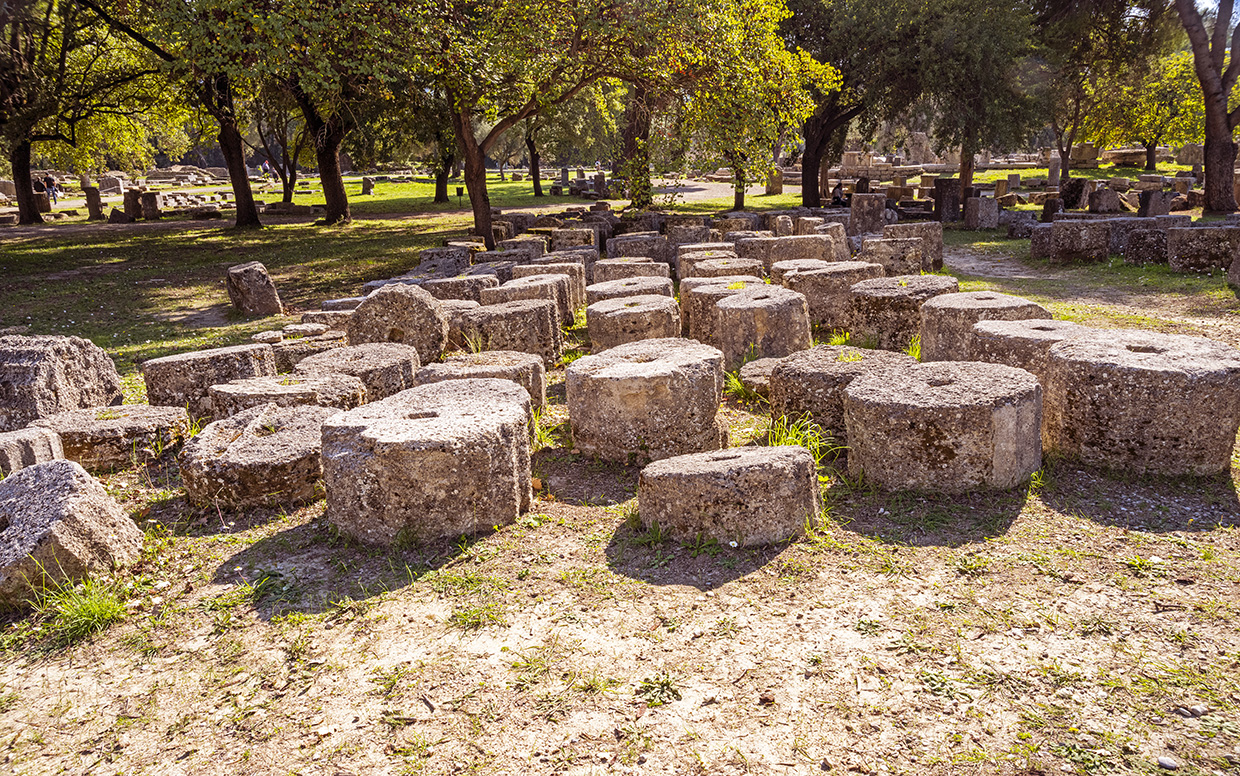
The cheaters (wall of shame)
And the other piece of this vendor area was a kind of wall of shame.
This is where the names of the cheaters were displayed.
Now these athletes did not have a statue as that would have been honoring them.
But did have their names etched in stone for all to see.
Those athletes who cheated were definitely frowned upon.
How Olympia was discovered
The Ancient Site of Olympia sat under mounds of earth for centuries.
The last games were held in 393AD.
There were some people that lived in the area until the 7th century but then abandoned it.
So for all those years, the Ancient Site of Olympia was covered and forgotten about.
It wasn’t until around 1876 that Ancient Olympia was uncovered by some French archeologists.
It was under about 25 feet of mud.
So it took some time.
In fact, it was 1972 before they got most of Olympia uncovered.
Close to 100 years.
There is more that is still under earth that has been recently found.
And they may uncover if it is safe and there is a budget to do so.
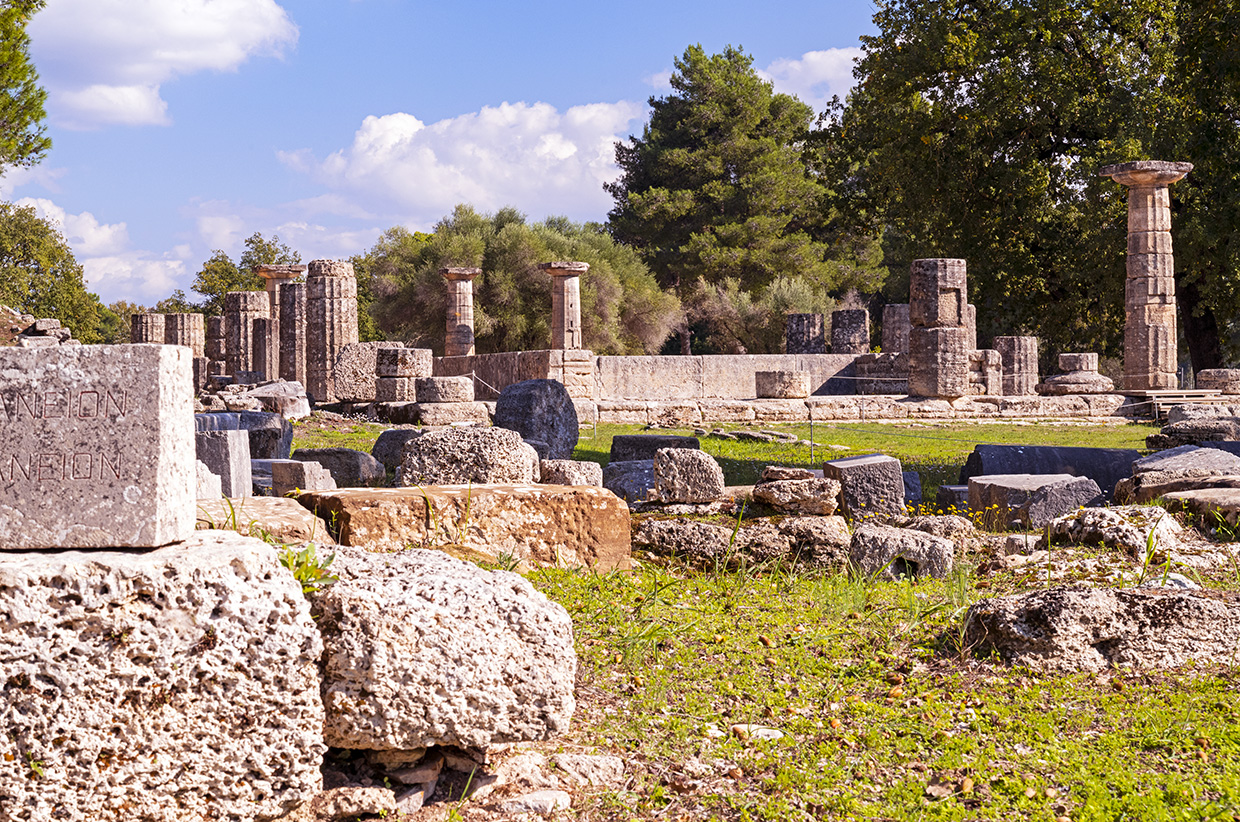
The town of Olympia Archaea
There was no town when the Ancient Site of Olympia was discovered.
But, because the workers needed equipment and places to stay and food to eat, a town grew up around the site.
So today, we have this charming, if slightly touristy town to stay in and wander about.
There are some kitschy souvenir stores but there are also some nice shops, places to eat and some good accommodation.
It’s small so don’t expect a LOT of choices.
But there is definitely enough.
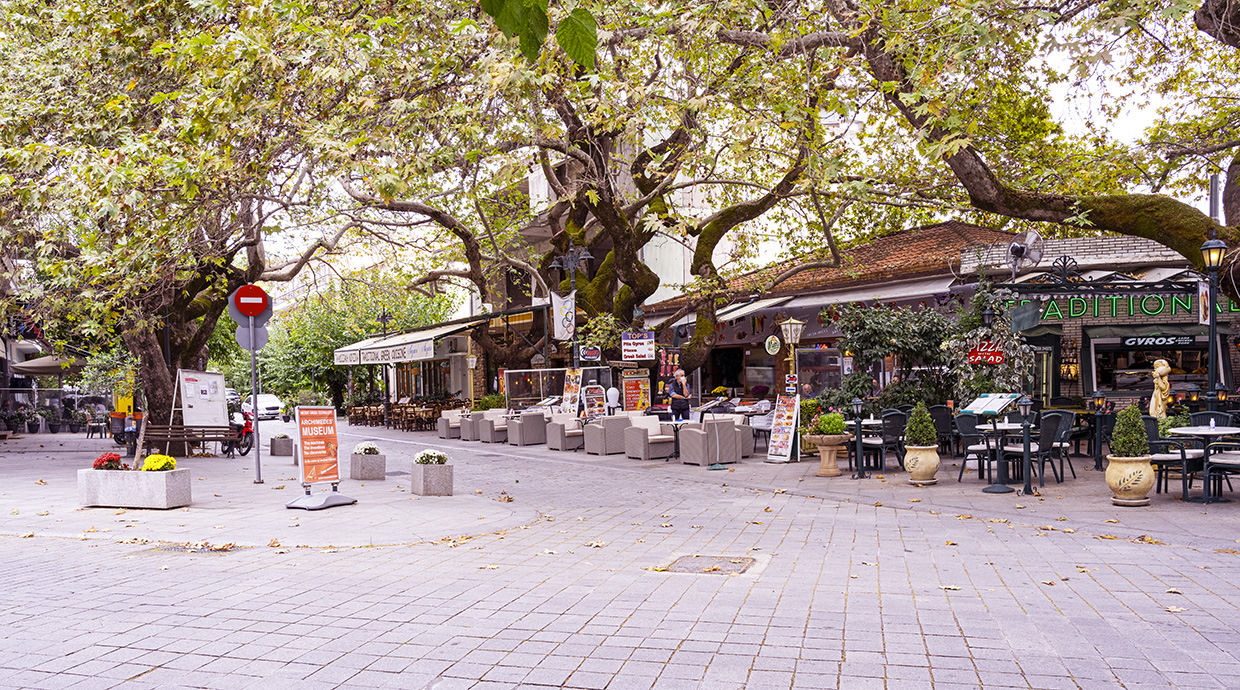
The museum
It is the museum that houses a lot of the relics of the Ancient Site of Olympia.
So do not skip the museum.
It is very impressive!
Your ticket to the site includes the museum.
And you will see some amazing artifacts that have been uncovered.
I’ll say it again — don’t miss this incredible museum.
PS It’s not the large so it’s not overwhelming like the Louvre in Paris!
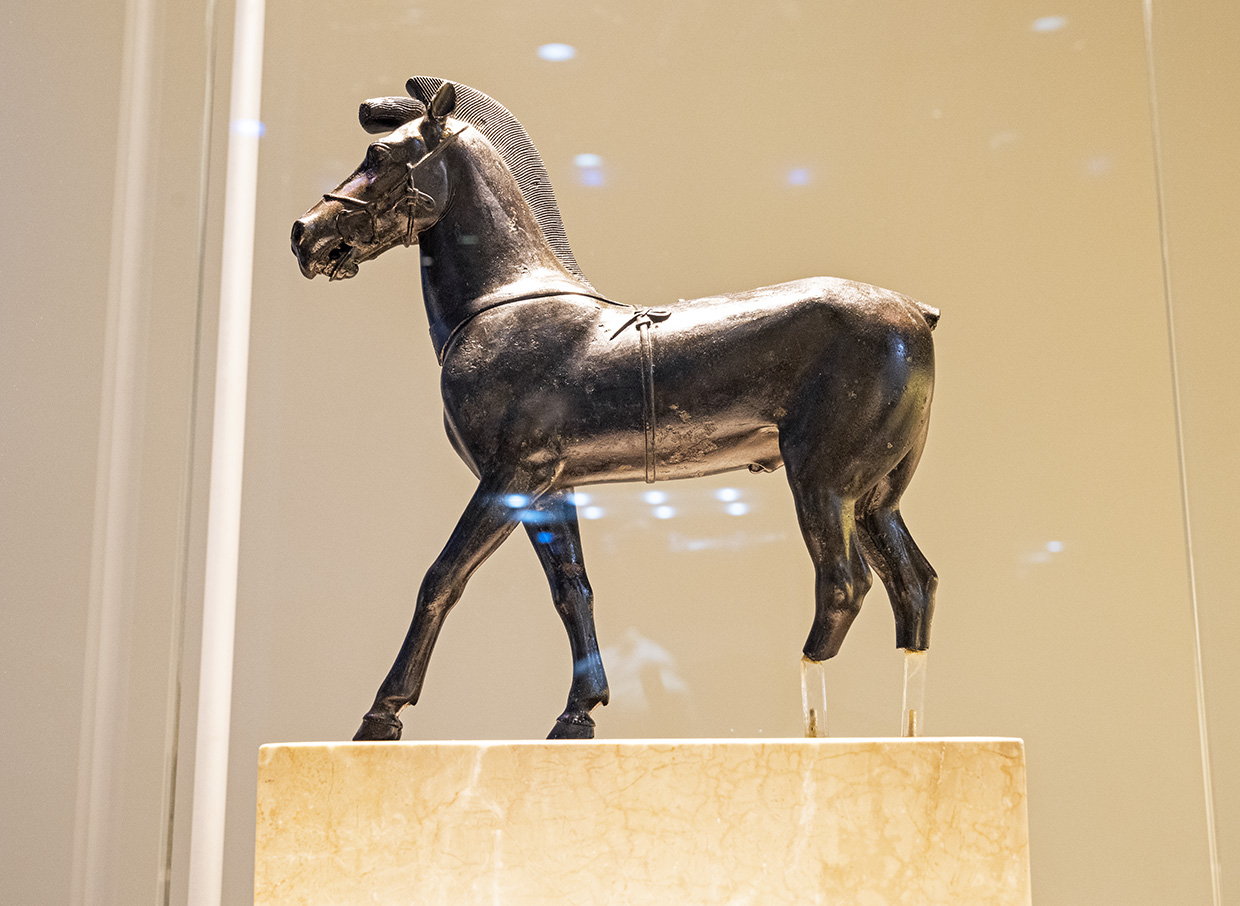
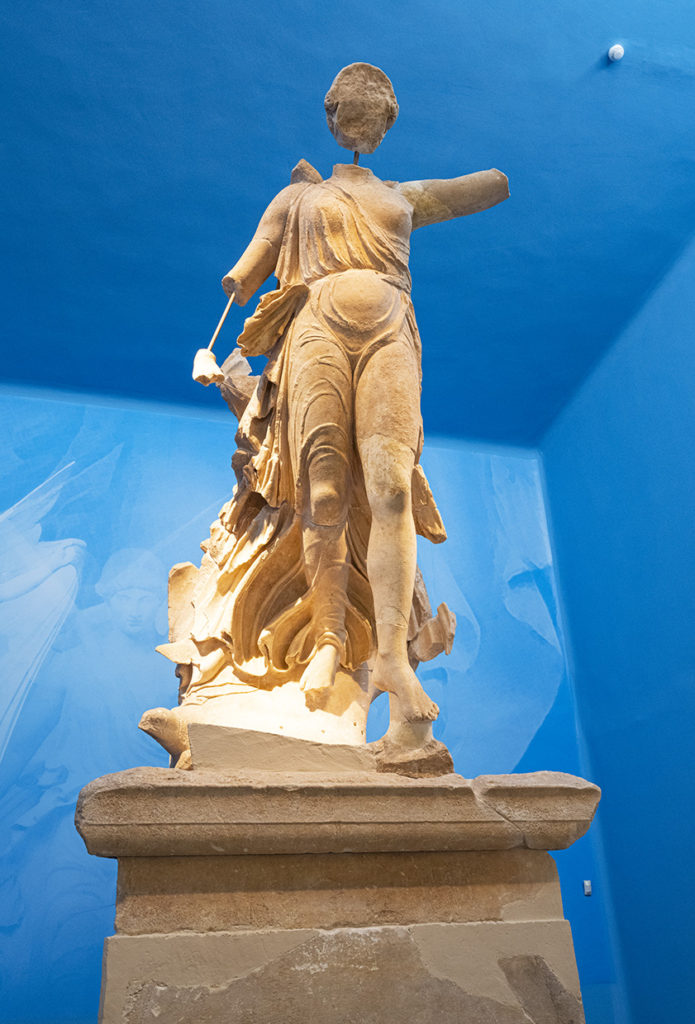
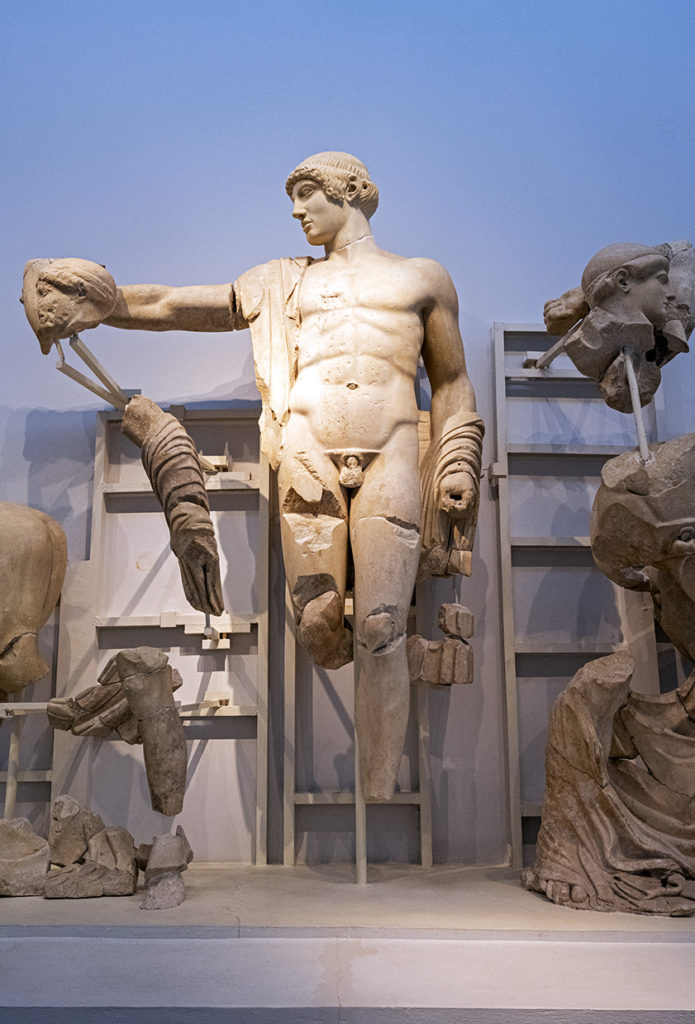
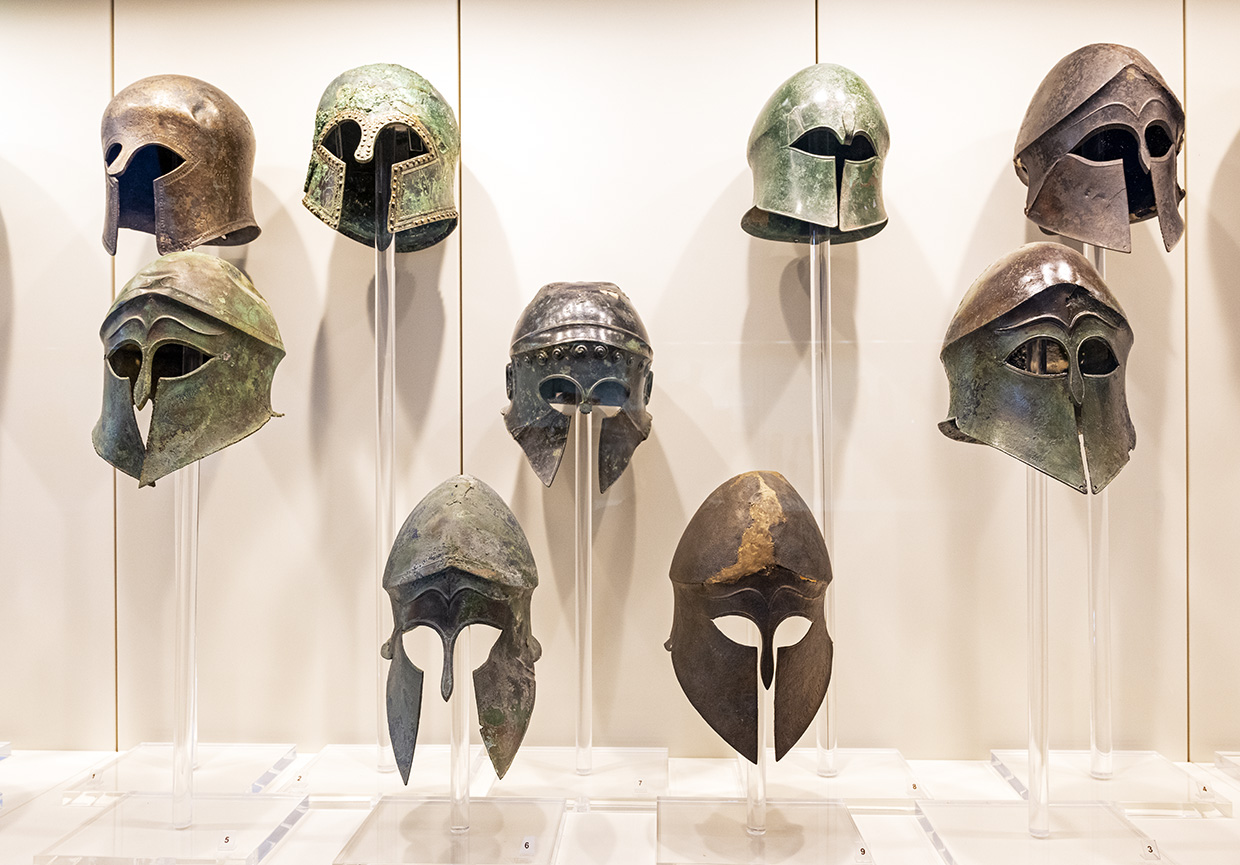
Tips for visiting the Ancient Site of Olympia Greece
Here is some good info for your visit to the Ancient Site of Olympia:
- Cost: €12 for the site which includes the site and the museum. Your ticket is good for the day.
- Do use a guide if possible. Sometimes you can join a small group tour of 10-15 people. Or you can hire a private guide like I did. It’s pricier but well worth it.
- Give yourself at least 4 hours to visit the site and the museum.
- Don’t visit in the summer if possible as it gets very hot in Olympia. I suggest spring or autumn for nicer weather and fewer crowds.
- If you do have to visit in summer, visit first thing in the morning like 8am to avoid the heat of the day.
- Do stay a couple of nights in so you aren’t rushed. There are some other museums to visit in town and the area around Olympia is just really beautiful.
- I highly recommend staying at Hotel Europa as it’s a wonderful hotel with a fabulous restaurant.
Need help?
Feel free to contact me to help plan your trip to the Ancient Site of Olympia.
It is an amazing, not-to-be-missed site for sure!
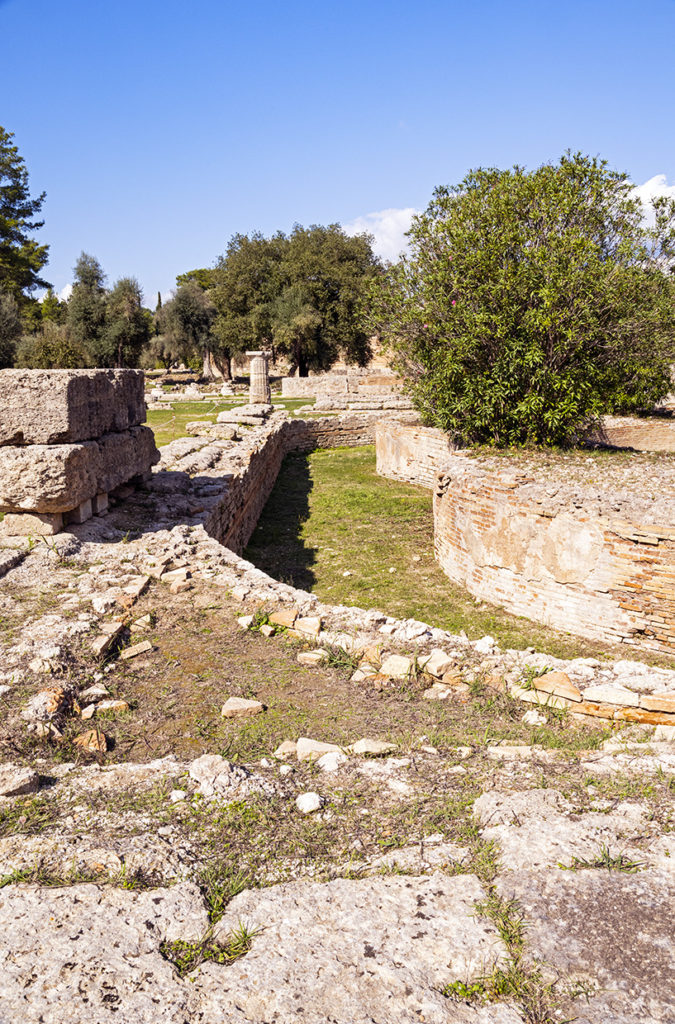
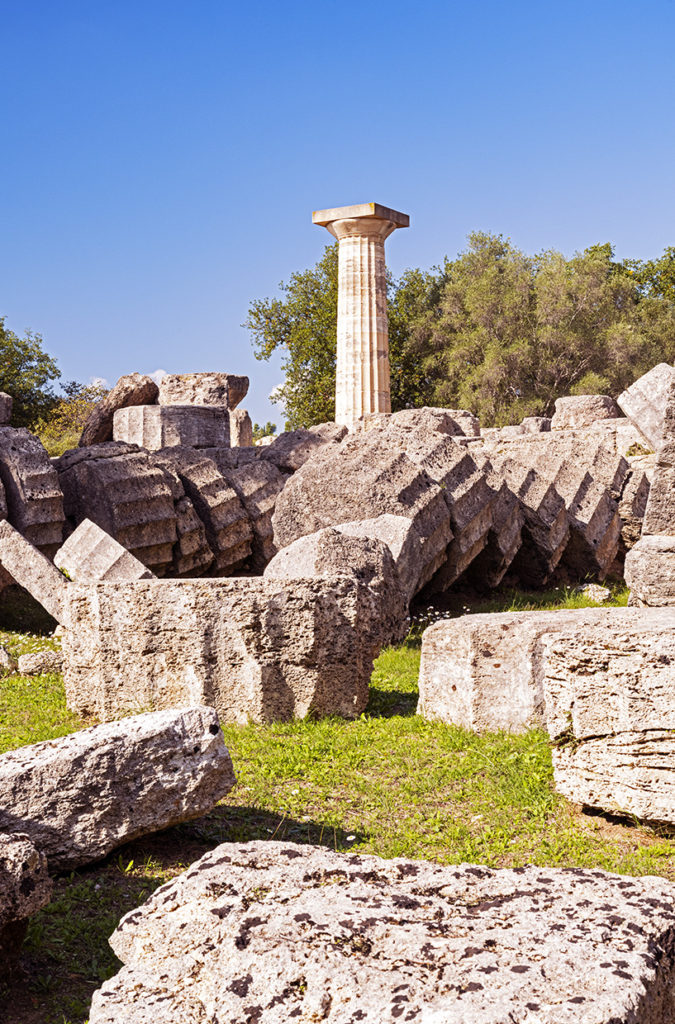
Please note that Wander Your Way is only recommending international travel to those who are vaccinated and feel comfortable doing so. This is because travel to Europe is complicated.
If you do decide to travel internationally, please do your research or use a travel planning service such as Wander Your Way. Please stay up to date using official sources like the WHO and CDC.
I am continuing to write about incredible destinations and to offer tips on travel to Europe, so that you will find some solace in these posts — so you dream about travel and learn about places. And hopefully make that bucket list! This way when we can all fully travel again, you’ll be ready to go.
And if you are ready to go soon, please contact Lynne for any assistance you may need.
Disclaimer: This post contains affiliate links. This means I will earn a commission – at no extra cost to you — if you click on the link and purchase anything from these trusted companies. It helps Wander Your Way, a small business, stay in business. Thanks for your support!
Like it? Pin it!
